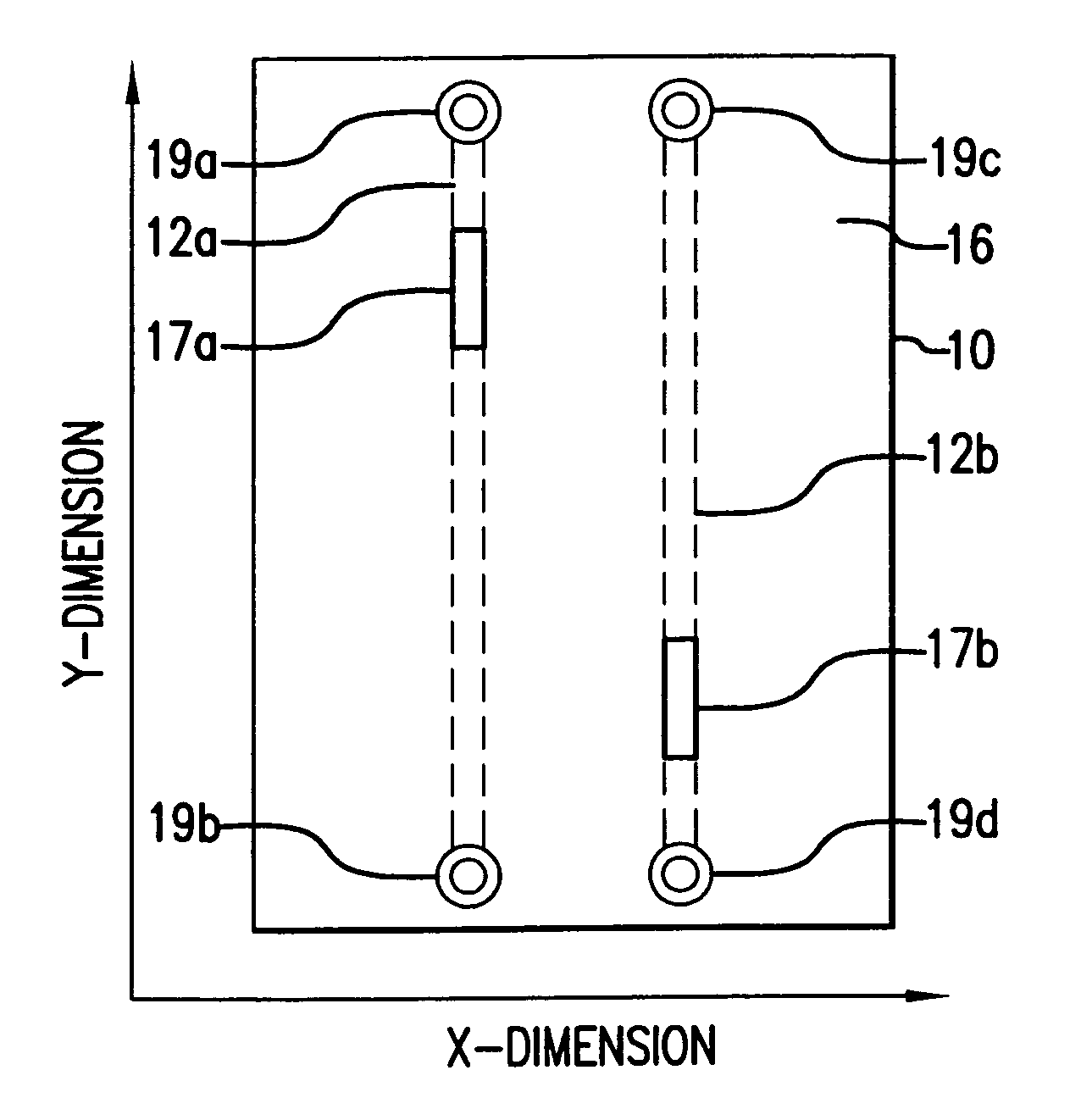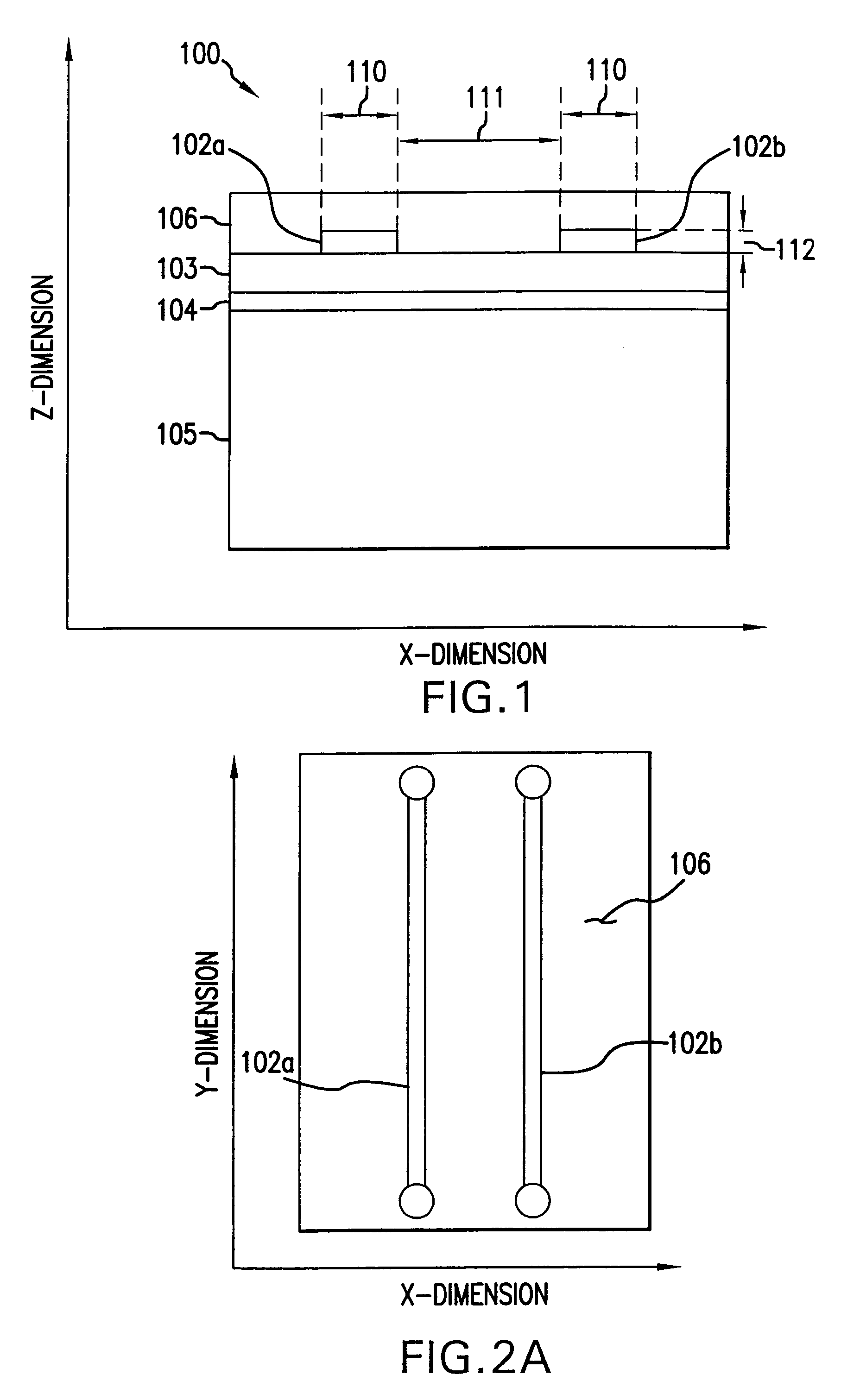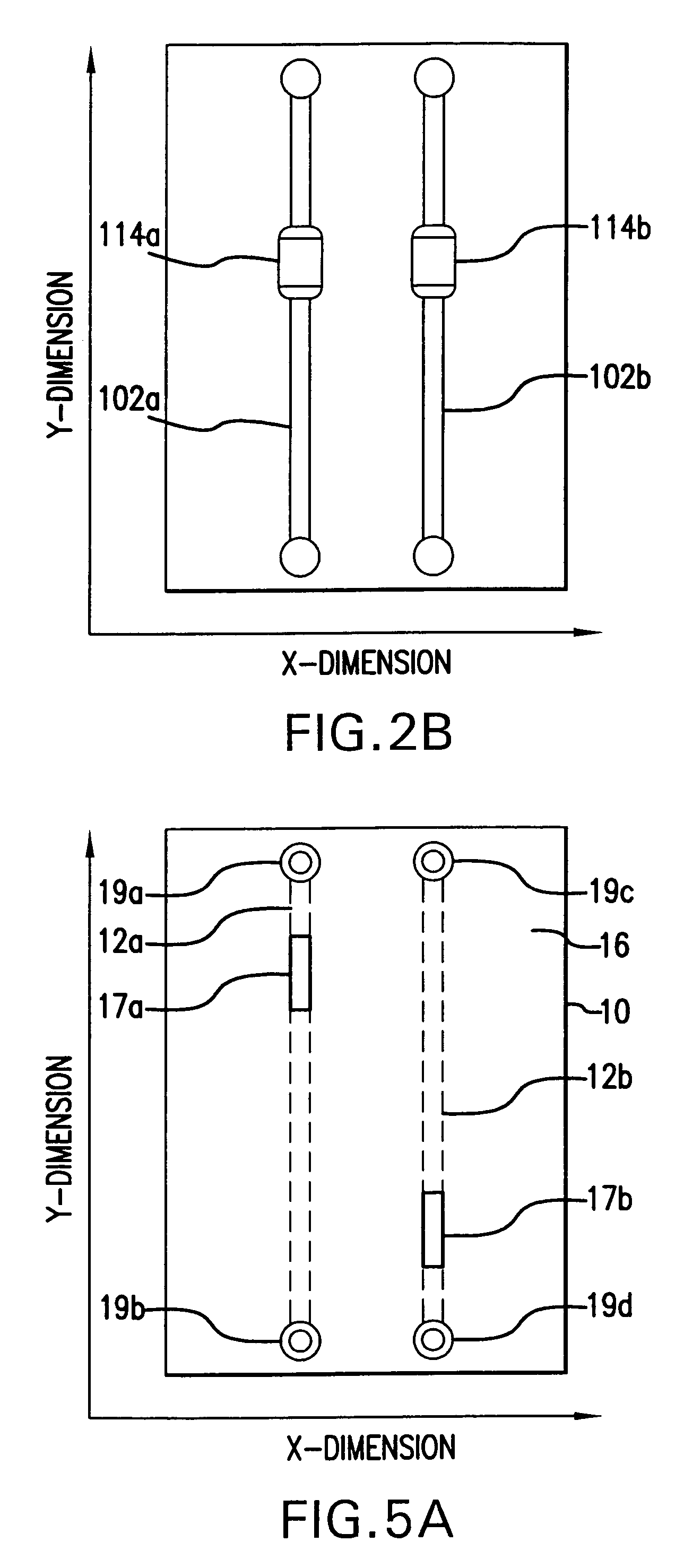Method and apparatus for manufacturing and probing printed circuit board test access point structures
a technology of access point structure and printed circuit board, which is applied in the direction of printed circuit manufacture, circuit inspection/indentification, instruments, etc., can solve the problems of increasing difficulty in reliably and repeatably hitting lower diameter targets, increasing difficulty in matching length and symmetries, and requiring complex tester resources
- Summary
- Abstract
- Description
- Claims
- Application Information
AI Technical Summary
Benefits of technology
Problems solved by technology
Method used
Image
Examples
Embodiment Construction
[0042]This invention relates to U.S. patent application Ser. No. 10 / 670,649 entitled Printed Circuit Board Test Access Point Structures And Methods For Making The Same filed Sep. 24, 2003 by Kenneth P. Parker, Ronald J. Peiffer and Glen E. Leinbach and assigned to Agilent Technologies, Inc., which teaches the basic concepts of bead probes or test access point structures on a printed circuit board and is incorporated herein by reference.
[0043]Turning now in detail to the invention, on a trace defined in an x-, y-, z-coordinate system where the x-dimension represents the trace width, the y-dimension represents the trace length, and the z-dimension represents the trace thickness, it will be recognized by those skilled in the art that present techniques for test access point placement on a printed circuit board utilize only the x- and y-dimensions. The present invention takes a different approach by taking advantage of the z-dimension, that is, the trace thickness. In this regard, the t...
PUM
 Login to View More
Login to View More Abstract
Description
Claims
Application Information
 Login to View More
Login to View More - R&D
- Intellectual Property
- Life Sciences
- Materials
- Tech Scout
- Unparalleled Data Quality
- Higher Quality Content
- 60% Fewer Hallucinations
Browse by: Latest US Patents, China's latest patents, Technical Efficacy Thesaurus, Application Domain, Technology Topic, Popular Technical Reports.
© 2025 PatSnap. All rights reserved.Legal|Privacy policy|Modern Slavery Act Transparency Statement|Sitemap|About US| Contact US: help@patsnap.com



